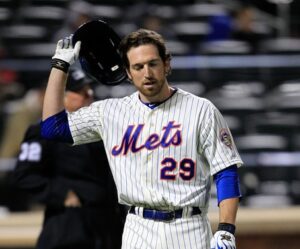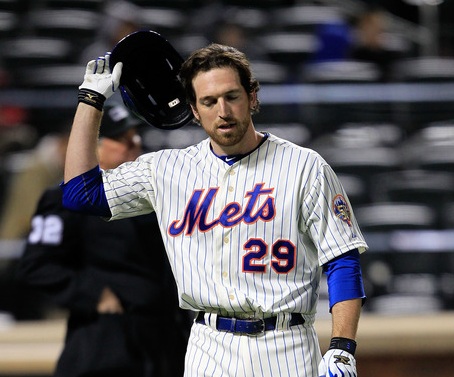 You can Google Ike Davis with dozens of different questions, but here’s one you won’t find an answer to: Why isn’t he as good as advertised?
You can Google Ike Davis with dozens of different questions, but here’s one you won’t find an answer to: Why isn’t he as good as advertised?
It was May of 2011 when Davis was hitting .302 with a .383 on-base percentage and resembling the slugger the Mets had trumpeted he could be when he ran into David Wright and hurt his left ankle and missed the rest of the season.
Then came last year, the virus and a miserable first half where he was almost sent back to the minors. He salvaged 2012 with a strong second half and 32 homers appeared to give him a pass going into this season, but he’s flailing again. How long before this season-opening slump becomes a first-half swoon?
Davis gave me an answer indicating what could be his problem this spring when I asked him about striking out, and whether he should concentrate on going to the opposite field and being more patient.
“I like to hit home runs,’’ Davis said in much the same tone a kid would say he likes to eat candy. Then, in what could be defined as defiance, added, “I’m a home run hitter; I’m going to strike out.’’
All that was missing was him sticking his tongue out and muttering, “so there.’’
Statistics can be interpreted any way you want, but Davis’ – both this year and his career – scream he might not be as good as he’s cracked up to be, and despite his manageable contract, is currently an offensive liability.
What else can you take out of a .129 batting average, .229 on-base percentage, .226 slugging percentage, one homer, two RBI and 11 strikeouts compared to four hits and four walks? Whether you are a traditionalist and believe in the basic stats, or are into the new math of baseball, it still adds up to a big hole in the middle of the order.
Go ahead, convince me those are good numbers.
Go ahead, convince me a 162-game average of .249 with 150 strikeouts to 72 walks, is somebody you build a team around.
General manager Sandy Alderson said strikeouts are acceptable if there’s a reasonable expectation of run production in return. He has driven in two this season.
These numbers, as is his .214 average against left-handers, are the result of poor plate habits. He lacks patience or pitch recognition; he either refuses or can’t shorten a swing that begins with a terrible hitch that gives him a long loop; and he doesn’t use the entire field. Either he doesn’t listen to the hitting coach or the hitting coach isn’t reaching him.
Davis can’t handle the low-and-away breaking pitches to the point where it is a mystery why pitchers would ever throw him a fastball. A manager should fine his pitchers if they threw Davis anything other than breaking stuff away. They should keep throwing him curveballs low-and-away until he proves capable of handling them.
Davis is rapidly becoming an all-or-nothing slugger in the mold of Dave Kingman, Rob Deer, Mark Reynolds and Adam Dunn. These are guys who are thrilling when they connect, but usually don’t.
If Davis continues on his current course, it will get to the point whether he changes his style and approach, or the Mets should change their first baseman.
It’s not difficult.














